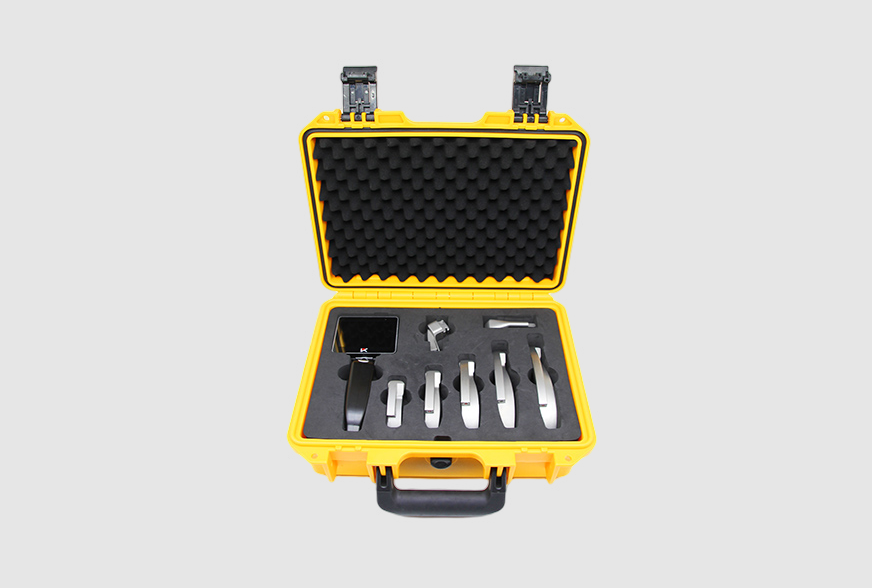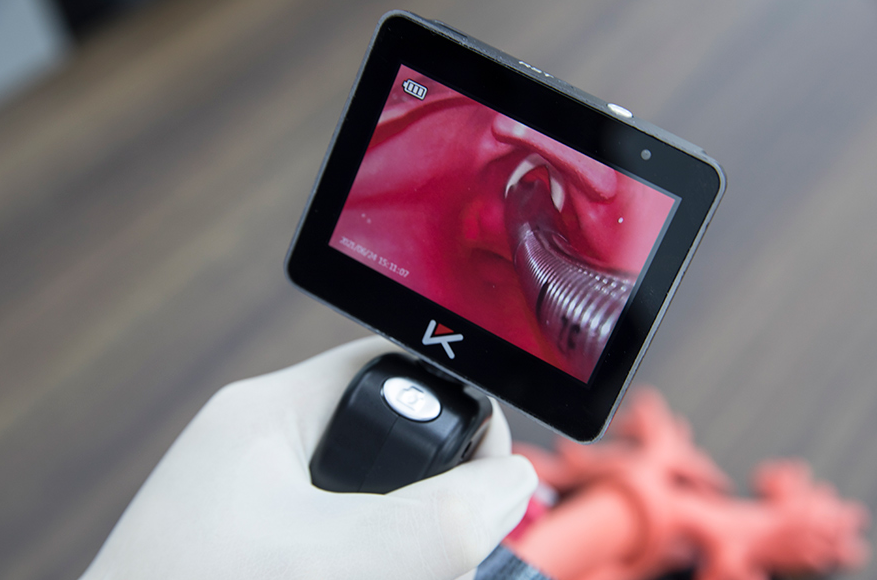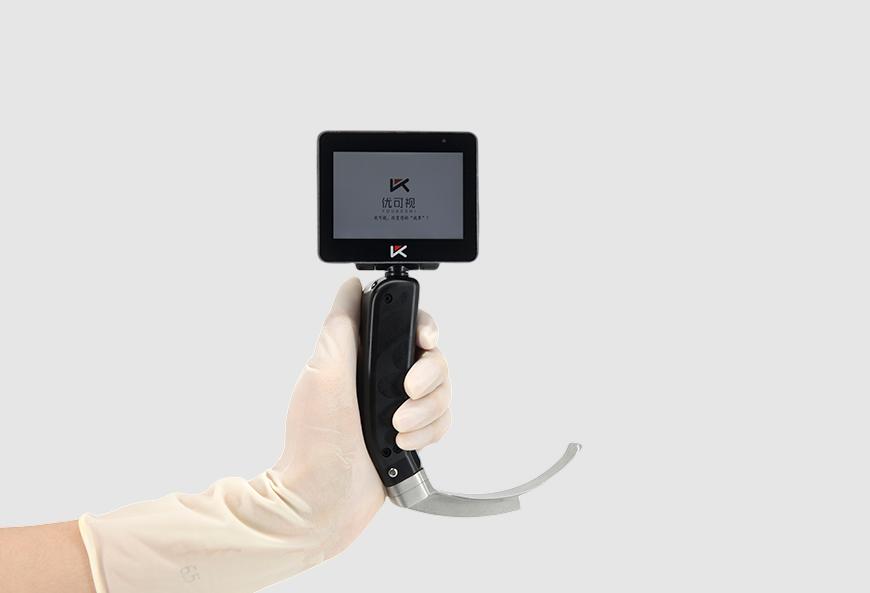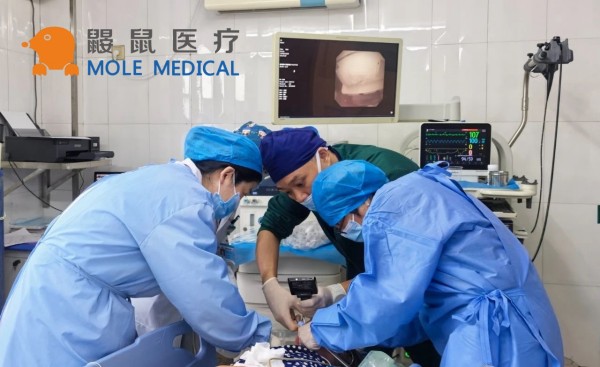Simple Laryngoscope Definition: Here to Know
Oct 15, 2024
Medical instruments have consistently occupied a pivotal role in driving healthcare advancements, and the laryngoscope is a prime example of this phenomenon. Picture a scenario where a patient’s airway becomes obstructed, creating a critical situation where every second is invaluable. In such a high-pressure environment, how can a physician or emergency responder ensure a precise visualization of the airway, which is crucial for performing a successful intubation? The answer lies in the proficient application of a laryngoscope, a tool that has revolutionized airway management procedures. Yet, what exactly is a Laryngoscope Definition, and why does it hold such significance in medical practices?

This blog will embark on an in-depth exploration of the laryngoscope’s definition, its historical progression, and its clinical relevance, delving into how it has evolved over time and undergone numerous innovations that have solidified its status as an indispensable device for healthcare professionals.
Laryngoscope Definition & Purpose
The term “laryngoscope” refers to a specialized medical apparatus specifically designed to provide a detailed visualization of the larynx, encompassing critical structures like the vocal cords and the glottis. Primarily, its main function is to facilitate tracheal intubation—an essential procedure for delivering ventilation to patients who are unable to breathe independently. By allowing medical practitioners to directly view the airway, a laryngoscope ensures that an endotracheal tube is accurately positioned, thereby securing the patient’s airway effectively.
However, the utilization of a laryngoscope is not confined solely to intubation. This versatile device can be deployed for a multitude of diagnostic purposes, such as detecting obstructions or anomalies within the throat, and it is also frequently employed during surgical procedures, such as the extraction of foreign objects. Due to its broad applicability, the laryngoscope has become a vital instrument across various medical departments, including anesthesia, emergency medicine, and intensive care units (ICU).
A Brief Historical Overview of the Laryngoscope
The Laryngoscope Definition dates back to the early 19th century when it was first conceived. In 1854, Manuel García, a vocal instructor, invented the earliest form of the indirect laryngoscope to examine the laryngeal structure of his students. Yet, it was not until Dr. Chevalier Jackson introduced the modern laryngoscope in the 20th century that this instrument gained widespread acceptance and integration into routine medical practice.

Today’s laryngoscopes have undergone substantial advancements, incorporating cutting-edge technologies such as high-definition cameras and ergonomic configurations, which have greatly enhanced both the safety and efficacy of airway management procedures.
Types of Laryngoscopes: Traditional vs. Contemporary Video Laryngoscopes
Over the years, the field of laryngoscopy has experienced significant technological evolution, giving rise to multiple variations of laryngoscopes. Traditional laryngoscopes typically feature either straight or curved blade designs, such as Miller or Macintosh blades. These conventional devices rely heavily on direct visualization techniques and continue to maintain a strong presence in medical settings.
Modern Video Laryngoscopes: A Game Changer
In stark contrast, contemporary video laryngoscopes—such as the handheld video laryngoscope—have redefined the landscape of intubation procedures. By integrating high-resolution cameras and digital displays, these advanced instruments offer indirect visualization of the larynx. This enhanced view significantly reduces the risk of patient injury and increases the probability of successful intubation on the first attempt, even in scenarios involving complex airway anatomies.
A noteworthy example is the handheld video laryngoscope developed by Mole Medical, which is equipped with seven reusable blades. This device boasts a high-definition camera, exceptional portability, and innovative anti-fog capabilities, rendering it a transformative tool for airway management, particularly in emergency settings.
Key Differences: Traditional vs. Video Laryngoscopes
While traditional laryngoscopes provide a straightforward, direct view of the larynx, video laryngoscopes deliver an enhanced, more detailed image that can be displayed on an external monitor. This feature is particularly advantageous when dealing with challenging airway situations, where precise navigation and accurate placement of the endotracheal tube are imperative. Moreover, video laryngoscopes significantly streamline the learning process for medical students and are frequently employed as instructional tools during clinical training sessions.
Clinical Relevance and Varied Applications of Laryngoscopes
The primary function of the laryngoscope is to facilitate tracheal intubation, yet its scope of application extends far beyond. The device is widely utilized across multiple medical specialties, including:
Intensive Care Units (ICU)
In critical care settings such as the ICU, laryngoscopes are indispensable for managing patients who require mechanical ventilation. Their role is crucial in securing the airway and minimizing potential complications that may arise during intubation procedures.
Neonatal Intensive Care Units (NICU)
Specialized laryngoscopes are used in neonatal and pediatric care to accommodate the smaller, more delicate airways of young patients. The handheld video laryngoscope’s ability to support customizable blades makes it a suitable option for neonates and pediatric cases, ensuring that clinicians have the appropriate size for each unique situation.
Anesthesia and Respiratory Departments
Anesthesiologists rely on laryngoscopes to maintain a secure airway before the administration of anesthesia. Similarly, emergency response teams use the device when rapid intubation is necessary, as in cases of cardiac arrest or severe respiratory distress.
Handheld Video Laryngoscope Definition: Features and Advantages
The handheld video laryngoscope is engineered to elevate the efficiency and safety of airway management, presenting a myriad of features that distinguish it from conventional models.

Ensuring First-Attempt Success
A prominent feature of the handheld video laryngoscope is its capacity to enable successful intubation on the first attempt. This is facilitated by its optimized design, which provides an exceptional view of the glottic structure. Consequently, clinicians can easily visualize the vocal cords and adjacent anatomical structures, thereby reducing the likelihood of repeated attempts that could potentially cause harm.
High-Resolution Camera and Anti-Fog Technology
The device’s integrated 2.0-megapixel camera projects a full-view image onto a high-resolution monitor, delivering the clarity needed for precise tube navigation and placement. Moreover, its innovative anti-fog technology eliminates the need for preheating, ensuring that a clear view is available immediately upon use.
Ergonomic and Portable Configuration
Weighing less than 350 grams, the handheld video laryngoscope is both lightweight and portable. Its ergonomic design minimizes hand fatigue, making it comfortable for clinicians to handle during prolonged procedures. Additionally, the device is compatible with reusable blades that can be sterilized, providing an economical and environmentally sustainable option for healthcare facilities.
Advantages of Video Laryngoscopes in Medical Practice
The transition to video laryngoscopes has been propelled by the numerous advantages they offer in clinical settings:
Improved Visualization
The enhanced video output provided by these modern devices significantly improves the visibility of airway structures, simplifying navigation around obstructions and facilitating accurate identification of anatomical landmarks.
Lowered Risk of Injury
With better visualization comes a reduced risk of trauma to the patient’s airway during intubation, particularly in cases where anatomical irregularities pose a challenge.
Educational and Instructional Benefits
Video laryngoscopes serve as invaluable educational tools. The real-time video feed can be shared with trainees, enabling them to observe and assimilate proper intubation techniques firsthand.
Mole Medical’s Handheld Video Laryngoscope: A Top-Notch Option
Mole Medical’s handheld video laryngoscope, which incorporates a built-in full-view 3” monitor and a robust construction, stands out as a premier option for healthcare providers. Its high-capacity lithium battery supports up to 180 minutes of uninterrupted operation per charge, and its reusable blades, available in various sizes, make it versatile enough for a wide array of patients.
This device’s compact carrying case is ideal for deployment in hospitals, clinics, and emergency scenarios. Its advanced features, such as the anti-fog mechanism and customizable blade options, position it as a frontrunner in airway management technology.
Final Thoughts
The Laryngoscope Definition remains a cornerstone of airway management across all its iterations. From its inception to the sophisticated video laryngoscopes of today, this instrument has adapted to meet the evolving demands of healthcare professionals. Mole Medical’s handheld video laryngoscope, with its comprehensive features and adaptability, exemplifies the future of laryngoscopy, offering unmatched benefits in clinical practice and training environments alike.
Gaining a thorough understanding of what a laryngoscope is and how it operates empowers healthcare practitioners to deliver superior care, thereby ensuring patient safety and optimizing clinical outcomes across various medical contexts.
Categories
Latest Articles

Disposable Nephroscopes: Redefining Safety & Efficiency in Urology
Introduction The shift towards minimally invasive urological surgery has found a pivotal ally: the disposable nephroscope. As traditional reusable scopes grapple with persistent biofilm contamination risks and soaring sterilization costs, the global medical community is rapidly adopting single-use solutions. This article analyzes the clinical value, technological evolution, and dynamic innovation landscape driving this transformative shift. ... Read more

Disposable Video Laryngoscope Blades: The Ultimate Solution for Preventing Cross-Contamination
In the operating room, as the cold light of a video laryngoscope illuminates a patient’s airway, an age-old medical challenge is being redefined: How can life-saving instruments avoid becoming vectors of infection? Jiangsu MoleMedical drives an innovative safety revolution—replacing reusable devices with single-use, sterile laryngoscope blades that create a pure barrier for critical airways. Traditional video ... Read more
-2.jpg)
FDA & CE Approved Video Laryngoscope: What Makes It Stand Out?
Introduction In high-pressure emergencies and precision-driven operating rooms, video laryngoscopy is revolutionizing airway management. Mole Medical’s FDA and CE-certified technology replaces tactile-dependent “blind intubation” with real-time visual navigation – enhancing safety, accuracy, and clinical outcomes worldwide. Why Certification Matters Mole Medical’s dual certifications validate its global compliance and performance: FDA Clearance: Rigorous validation of safety/efficacy ... Read more

Mole Medical Showcases Advanced Endoscopy Solutions at CMEF Autumn 2025, Driving Global Partnerships
Guangzhou, China – September 26-29, 2025 – The 92nd China International Medical Equipment Fair (CMEF Autumn) concluded successfully on September 29th at the Canton Fair Complex in Guangzhou. Mole Medical Technology Co., Ltd. (Mole Medical) made a significant impact at the event, drawing global medical professionals and partners to its booth (Hall 2.1, Stand Q24) ... Read more

How to Use Disposable Ureteroscopes Safely and Efficiently
In the field of urology, the application of disposable electronic ureteral-kidney pelvis endoscopy catheters is leading the technological innovation in minimally invasive surgeries. According to the 2024 multi-center research data from China’s urology department, among the over 5,000 surgeries included, the patient group using disposable catheters performed significantly better in key indicators such as operation ... Read more



